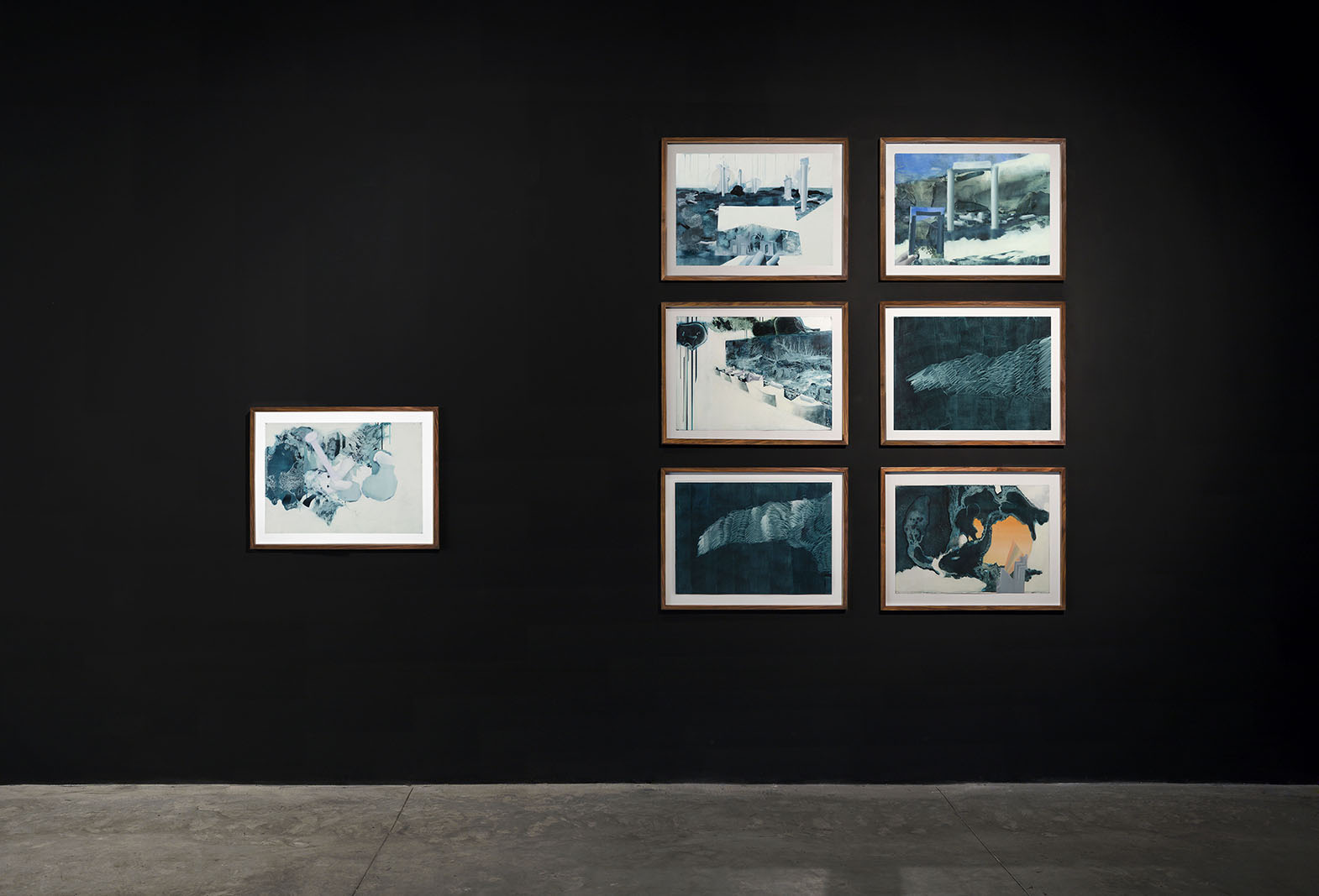

em | Hanita Ilan and Tal Gafny July 2017 | Sadnaot Haomanim, Tel Aviv, Israel | Curating and Text by Dr. Vered Zafran Gani
Photography: Elad Sarig





The exhibition is the fruit of a two years long collaborative process of artists Hanita Ilan and Tal Gafny. The duration of the process allowed the artists to meet, converse and reach decisions together. Although authorship is distinctive, their dialogue and mutual trust is present in the throughout the exhibition space. The playful nature of both studio work and installation process is present in each component and the space as a whole.
![]()
The work of Hanita Ilan is charged with juxtapositions of past and present: the history of the middle east and its complex relations with archeology. The foot of the Colossus of Constantine fades and appears upon paper scrolls resembling architectural columns. Images of before/after of destroyed temples of Palmyra, Syria, were the starting point of two paintings shown in the black part of the gallery space. Alongside, are both personal and formal layers: a yellow rectangle, broken into a circle and other forms, relates to the format of a painting as a whole and to the gallery space as it breaks apart; an additional aspect of the relationship between destruction and construction.Tal Gafny creates a morbid presence with flickering images that summon thoughts about ends and edges. Such is a tombstone-like object engraved with a graphic shape of a wave, emphasized with the use of pigments.
![]()
![]()
![]()
The relations between the ordered and chaotic, the whole and the broken, repeatedly appear in fragments of plastic plates, the ceramic casts made out of them, and in a video in which segments of other artists’ work become the starting point of a drawing lesson, introducing contemporary art which was fashionable until recently, and then neglected by its makers. An eyebrow suspended from the ceiling articulates a bodily presence expressing anger, or just concentration perhaps.
![]()
![]()
The exhibition explores proximity and density as well as gaps and spacing, in both content an
d physicality: the grid appearing in different ways, the distances between objects, sometimes almost touching each other and at other times widely spaced. Emis a typographic measurement referring to the spacing of letters and words in a given font.
![]()






